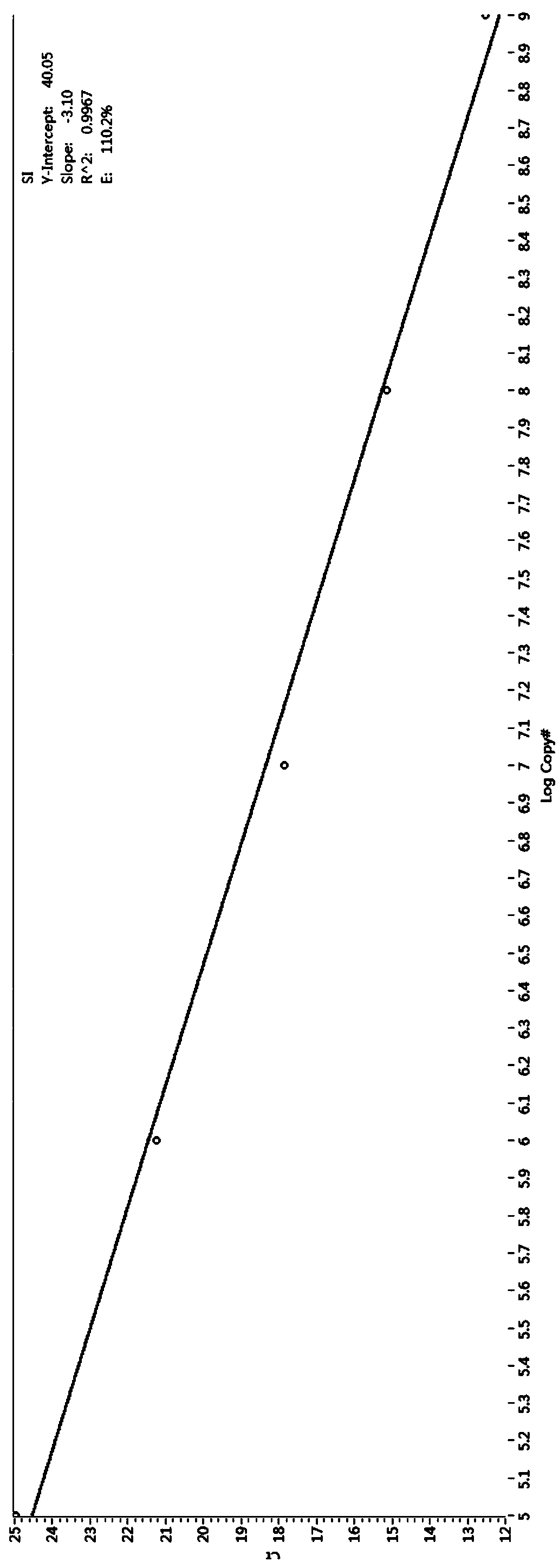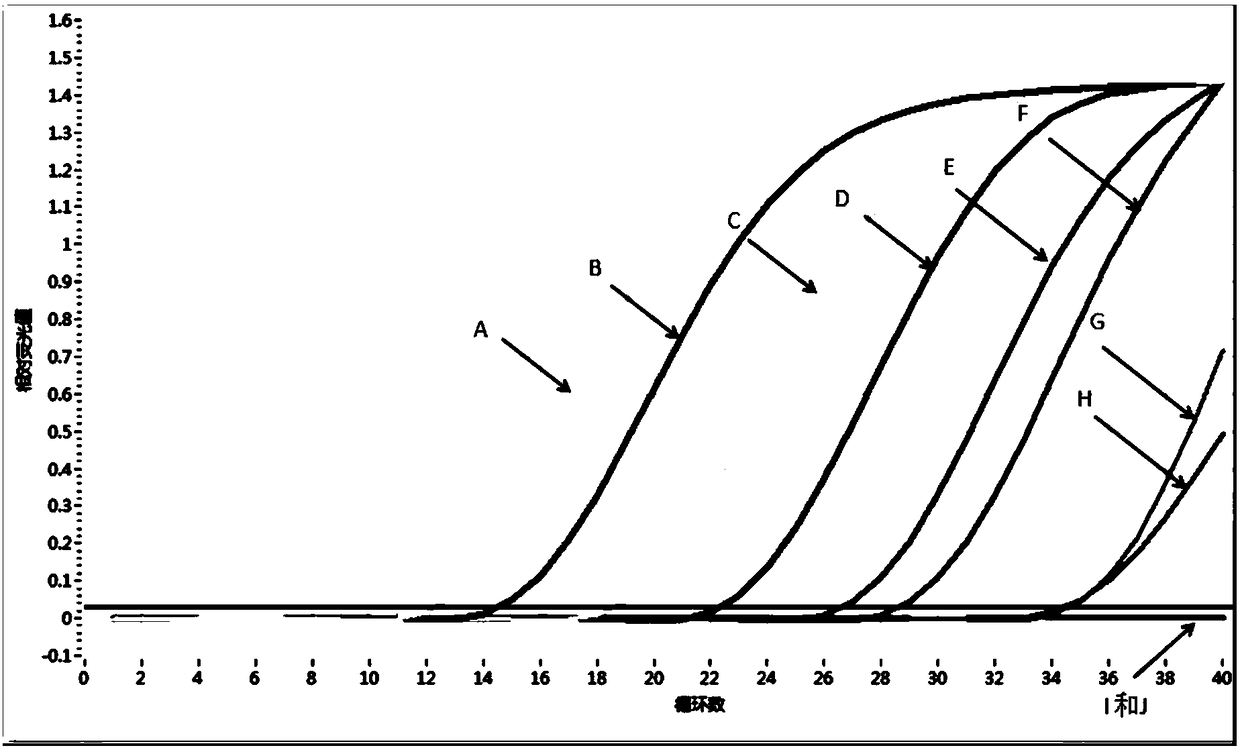Specific primer and probe for detection of HTLV-I and HTLV-II and fluorescent quantitative PCR detection kit
A real-time fluorescence quantitative and specific technology, applied in the direction of microorganism-based methods, microorganisms, biochemical equipment and methods, etc., can solve the problems of unsuitable blood screening, increased fluorescence intensity, poor specificity, etc., to reduce economic burden, Effects of reducing workload and relieving pain
- Summary
- Abstract
- Description
- Claims
- Application Information
AI Technical Summary
Problems solved by technology
Method used
Image
Examples
Embodiment 1
[0027] The preparation of embodiment 1 LTR gene standard product
[0028] To establish a real-time fluorescent quantitative PCR method, the external standard required by the method must first be prepared. The standard should contain highly conserved and specific sequences, and high specificity of the reaction must be ensured.
[0029] Under the electron microscope, HTLV-1 and HTLV-2 are spherical, with a diameter of about 100nm. The center is the viral RNA and reverse transcriptase. The outermost layer is the envelope of the virus. The surface is embedded with gp120, which can bind to CD4 to mediate the virus Infect. Inside the envelope is the capsid of the virus, which contains two structural proteins, P18 and P24. The genome of the virus consists of three structural genes, gag, pol, and env, and two regulatory genes, tax and rex, from the 5' to the 3' end, both ends of which are LTRs.
[0030] However, HTLV-1 and HTLV-2 have about 70% homology in genetics. Therefore, the s...
Embodiment 2
[0084] Embodiment 2 real-time fluorescent quantitative PCR kit
[0085] 1. Design and synthesis of specific primers and probes
[0086] Taking the conserved fragment of the LTR rDNA gene of HTLV selected in Example 1 as the target, a set of real-time fluorescent quantitative PCR primers and probes were designed using PrimerPremier 5 software and Beacon Designer 8.
[0087] As the core of the present invention, a group of primers and probe nucleotide sequences and amplified fragments for HTLV real-time fluorescent PCR detection are as follows:
[0088] Upstream primer: 5'-CCTTATATCAGAGGCCGAA-3';
[0089] Downstream primer: 5'-TCTGGCAGCCCATTGTCAA-3'.
[0090] Probe: 5'-FAM-AGTGCCAAAGACCCTTCCTGGGCCTCT-TAMRA-3'.
[0091] The fluorescent reporter group at the 5' end of the probe is FAM, and the fluorescent quencher group TAMRA is labeled at the 3' end. At the same time, other fluorescent reporter groups such as TET, JOE, HEX, VIC and fluorescent quencher groups such as DABCYL, BH...
Embodiment 3
[0114] Example 3 The quantitative detection method of the sample to be tested by the real-time fluorescent quantitative PCR kit
[0115] Respectively with the sample DNA to be tested and the pMD18-T-LTR rDNA series concentration standard (1.00 × 10 7 copies / ml, 1.00×10 6 copies / ml, 1.00×10 5 copies / ml, 1.00×10 4 copies / ml, 1.00×10 3 copies / ml) as a template, use the primers and probes in the kit to perform fluorescent quantitative PCR amplification, and set up positive and negative controls at the same time.
[0116] The PCR reaction system is as follows:
[0117]
[0118] Reaction conditions: 94°C pre-denaturation for 2 minutes, 94°C for 15 seconds, 60°C for 40s and collecting fluorescence signals, 40 cycles. Rapid quantitative detection through the standard curve and the Ct value of the sample to be tested.
PUM
 Login to View More
Login to View More Abstract
Description
Claims
Application Information
 Login to View More
Login to View More - R&D Engineer
- R&D Manager
- IP Professional
- Industry Leading Data Capabilities
- Powerful AI technology
- Patent DNA Extraction
Browse by: Latest US Patents, China's latest patents, Technical Efficacy Thesaurus, Application Domain, Technology Topic, Popular Technical Reports.
© 2024 PatSnap. All rights reserved.Legal|Privacy policy|Modern Slavery Act Transparency Statement|Sitemap|About US| Contact US: help@patsnap.com










